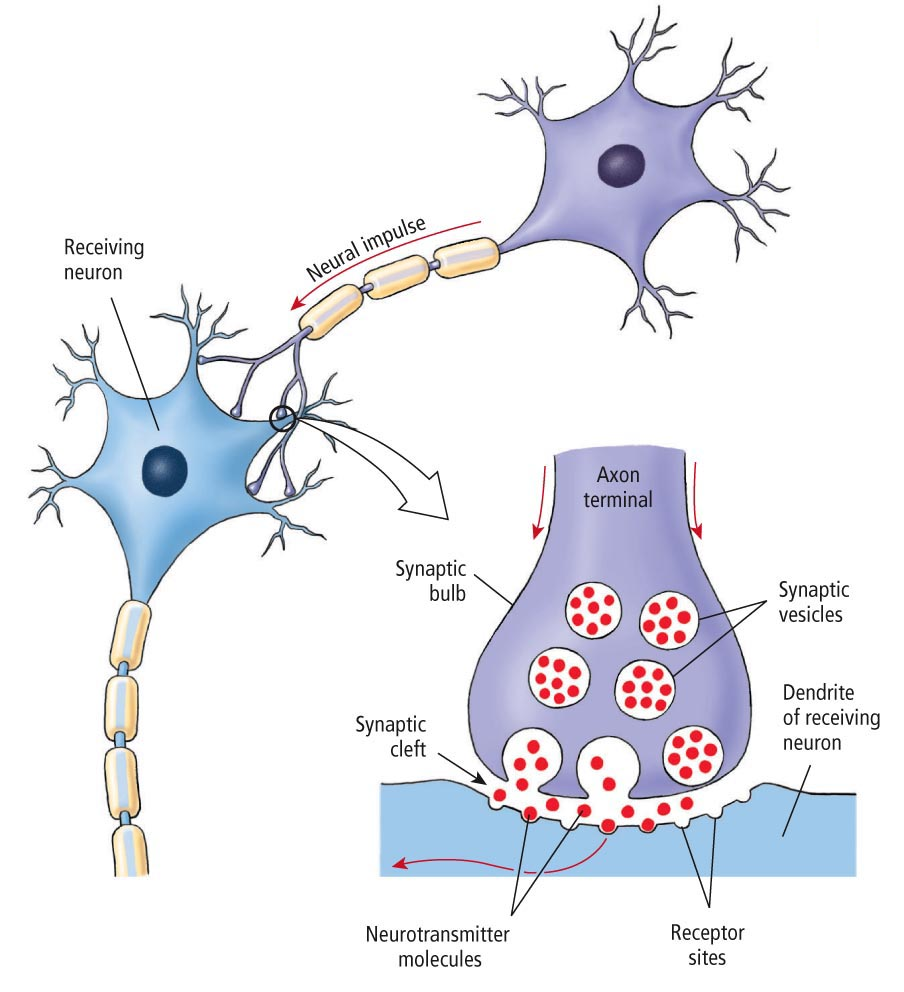In the nervous system, what is the function of the synapse?
2 Answers
The synapse is the gap between two nerves. An electric impulse travels across nerves and at the end a chemical is released which diffuses across the gap to the next nerve.
Explanation:
As for why they exist as opposed to one very long nerve, it is difficult to say.
There are obvious perks to it however, for example the brain could not have the processing power it does in the space it does if it were not for the variety of chemicals that synapses can release. If it were a nerve there would be only two options, on and off. The nerve to the synapse is - in terms of the brain - the difference between a digital and analogue signal.
However in the CNS, synapses would seem to slow our reflexes down (as electric impulses travel far faster than chemicals diffusing).
Finally, it does not seem practical to have very long nerves as they would be damaged more often.
The synapse transmits a signal from one nerve cell to the next nerve cell.
Explanation:
Nerve cells are responsible for carrying all external and internal signals to a specific target.
Signals are transmitted from one nerve cell (neuron) to another. Between these cells there is a small gap called the synapse. The synapse comprises:
- the ending of one neuron (axon)
- the gap
- the receiving end of the next neuron (dendrite)
Axons and dendrites carry electrical signals , formed by the flow of potassium and sodium ions. Such an electrical signal can't cross the gap. So, at the synapse, the electrical signal is converted to a chemical signal.
The electrical signal triggers release of messenger molecules called neurotransmitters at the end of the sending neuron. These neurotransmitters diffuse across the gap of the synapse and bind to specific receptors on the dendrite of the receiving neuron. There the chemical signal is converted back to an electrical signal.



